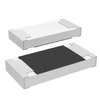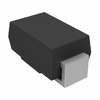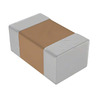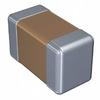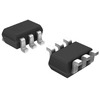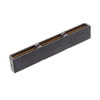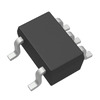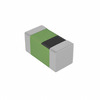CR2430 VS CR2450 Battery: Size, Battery Characteristics, Applications
In the world of portable power sources, the CR2430 and CR2450 lithium coin batteries stand out for their remarkable capabilities and adaptability. These batteries, engineered with lithium manganese dioxide technology, offer distinct advantages in terms of energy density, reliability, and environmental safety, making them ideal for a wide range of applications. Both batteries operate at a standard nominal voltage of 3.0 volts, which is important for devices that require a steady and reliable power supply. The versatility of these batteries is further highlighted by their wide operational temperature ranges, making them reliable choices under varied environmental conditions. However, despite their robust design and advanced chemical compositions, challenges such as labeling inconsistencies and potential safety risks in specific scenarios remain a concern. These factors necessitate a deeper understanding of each battery's unique attributes and safety features to ensure optimal usage and compatibility across different electronic devices.
Catalog

Figure 1: CR2430 VS CR2450 Battery
CR2430 Battery Introduction
The CR2430 battery, a non-rechargeable lithium manganese dioxide (LiMnO2) cell, stands as a staple in the realm of small power sources due to its versatility and reliability. Shaped as a coin or button cell, it measures 24.5 mm in diameter and 3.0 mm in height, dimensions that make it ideal for compact spaces in a wide array of devices. Users find it in watches, fitness wearables, car keys, remote controls, calculators, glucose monitors, and even in dog collars as a crucial backup power source.

Figure 2: CR2430
A notable aspect of the CR2430 is the potential for confusion arising from the variability in labeling across different brands and products. While it is primarily recognized under the CR2430 designation, it also appears as DL2430, ECR2430, KCR2430, and various other aliases that reflect slight variations in chemical composition or are specific to certain manufacturers. This labeling inconsistency can challenge users trying to match replacement batteries with their devices, particularly when the same physical size is shared by cells differing in chemical make up or rechargeability. Delving deeper into its technical specifics, the CR2430 operates with a standard nominal voltage of 3.0 volts and has a cut-off voltage of 2.0 volts, ensuring devices operate efficiently down to the last bit of energy. The battery's capacity typically ranges from 270 to 320 mAh, but this can fluctuate based on several operational conditions. The battery life, for example, is contingent upon storage temperature and discharge conditions, which include the current and operational temperature of the device it powers. It discharges at a standard rate of approximately 0.2 mA, with pulse currents that can swing between 7 to 15 mA, dependent largely on the pulse duration in the application.
The chemical composition of lithium manganese dioxide grants the CR2430 a notably low self-discharge rate when kept at room temperature, enabling most brands to offer a shelf life between 5 to 10 years. However, this longevity can be compromised if the battery is subjected to higher storage or discharge temperatures, which accelerate the rate of self-discharge and may reduce overall efficacy and lifespan. Despite these complexities, the CR2430 battery remains a reliable and consistent power source for numerous electronic applications. Its durability and performance are tailored to meet the demands of both everyday and specialized devices, ensuring it continues to be a preferred choice in various electronic applications. This robustness, coupled with broad compatibility and long shelf life, underscores its status as a critical component in the landscape of portable power solutions.
CR2450 Battery Introduction
The CR2450 battery is outstanding among coin cell batteries, notable for its substantial capacity and durability which make it a preferred choice for a wide range of electronic devices. These devices often include watches, computer motherboards, medical equipment, LED flashlights, toys, various types of remote controls, car keys for remote locking systems, security systems, and even sophisticated wearable electronics. Due to its robust performance, which eclipses that of many smaller 3.0V lithium batteries, it is especially suited for applications that demand a high energy output, ensuring that devices operate longer without the need for frequent replacements.

Figure 3: CR2450
The battery's considerable diameter of 24 millimeters (roughly 0.945 inches) and a thickness of 5.0 millimeters (about 0.197 inches) make it slightly more substantial than many other coin cells, with a weight ranging typically from 5.7 to over 6.3 grams (0.2 to 0.222+ ounces). This size and weight contribute to its solid and durable feel, setting it apart from lighter, thinner cells that are often less capable of delivering the same level of power over extended periods. The CR2450's construction is designed for longevity and safe operation, featuring a lithium-based negative electrode and a positive electrode made of manganese dioxide. This combination is ideal for providing steady, reliable power. The battery's design is encapsulated in its "CR" prefix, which stands for lithium chemistry, indicating not only the type of materials used but also assuring users of its quality and compliance with safety standards.
Labeling on the CR2450 can vary significantly, reflecting its diverse uses and the needs of different devices. While the standard label is CR2450, alternative labels such as 5029LC, DL2450, ECR2450, CR2450N, CR-2450, and CR2450EL among others might appear. These variations often denote slight differences in specifications tailored to enhance performance in specific devices or to meet certain regulatory standards across different regions. Understanding these labels is important for ensuring compatibility and achieving optimal performance, helping users select the correct battery for their device's specific needs. Installing or replacing the CR2450 is a precise task that underscores its importance in device functionality. Users need to carefully insert the battery into its compartment, aligning it so that the positive side, typically marked with a "+", faces upwards. Proper installation helps prevent power interruptions and contributes to the device's overall reliability and efficiency.
Comparison of CR2430 and CR2450 Specifications
When comparing the specifications of the CR2430 and CR2450 lithium coin batteries, it's clear that both offer reliable and high-performing options for those needing compact energy sources. These batteries share similar chemical systems and operational parameters, yet they differ significantly in size, capacity, and applications due to their design variations.

Figure 4: Dimensions of CR2430

Figure 5: Dimensions of CR2450
Starting with the CR2430, this battery falls into the "lithium coin" category and utilizes a lithium/manganese dioxide (Li/MnO2) chemistry. It's known officially as ANSI/NEDA-5011LC or IEC-CR2425. It operates at a nominal voltage of 3.0 volts, providing a typical capacity of 320 mAh when discharged down to 2.0 volts under a load resistance of 15K ohms at 21°C. The battery weighs about 4.6 grams (0.16 ounces) and occupies a volume of approximately 1.3 cubic centimeters (0.08 cubic inches). Despite its compact size, it achieves an energy density of 183 milliwatt-hours per gram and 647 milliwatt-hours per cubic centimeter. It contains less than 0.3 grams of lithium and can function in a wide range of temperatures, from -30°C to 60°C. The self-discharge rate of the CR2430 is roughly 1% per year, making it quite efficient for long-term use.
In contrast, the CR2450 also fits into the "lithium coin" category but is designed to handle more demanding applications, reflecting its larger size and greater energy storage capability. This battery also uses a lithium/manganese dioxide system and is designated as ANSI/NEDA-5029LC or IEC-CR2450. Like the CR2430, it operates at a nominal voltage of 3.0 volts but offers a higher typical capacity of 620 mAh, also measured at a discharge down to 2.0 volts but under a lower load resistance of 7.5K ohms at 21°C. The CR2450 is heavier, weighing 6.8 grams (0.22 ounces), and has a larger volume of 2.4 cubic centimeters (0.14 cubic inches). It matches the CR2430 in energy density, both per gram and per cubic centimeter, and has the same amount of lithium content. Its operational temperature range and self-discharge rate are identical to those of the CR2430.
Comparison of CR2430 and CR2450 Battery Characteristics
The CR2430 and CR2450 lithium coin batteries share several advanced features, but they also have distinct characteristics tailored to different applications. Both batteries are designed for high efficiency and compact device compatibility, making them essential for modern electronics.
CR2430 Characteristics
The CR2430 battery operates effectively across a broad temperature range from -30°C to +70°C, making it versatile for use in varying environmental conditions. It is particularly noted for its lightweight, high voltage, and high energy density, characteristics that result in a 3V output—nearly double that of standard alkaline or manganese batteries. This high voltage allows for the reduction of battery numbers needed in devices, effectively minimizing space and decreasing weight, which is crucial for portable electronics.
This battery also boasts a long shelf life, retaining up to 90% of its capacity even after 10 years of storage. This longevity is due to the chemical stability provided by the combination of manganese and lithium dioxide, tested across all operating temperatures under low-load discharge conditions. With its super compact design, the CR2430 delivers substantial power, adequate to replace multiple standard batteries in many devices, which is ideal for small, power-hungry gadgets.
The CR2430 features excellent leak resistance due to a newly developed battery structure and electrolyte that maximize safety over extended periods. This battery is part of a comprehensive product line that caters to a wide range of applications and does not contain mercury, making it environmentally friendlier.
CR2450 Characteristics
Similarly, the CR2450 also features lightweight construction, high voltage, and high energy density, delivering a consistent 3V power supply. This battery, too, enables a reduction in the number of batteries required by devices, significantly saving space and reducing the overall weight.
What sets the CR2450 apart is its exceptional discharge characteristics. It maintains stable voltage levels even through extended discharge periods, enhancing the reliability of the devices it powers. Such devices typically require minimal maintenance, as the battery seldom needs replacement.
Like the CR2430, the CR2450 is designed with a new battery structure and electrolyte that provide superior leak resistance over long durations. It can operate within a wide temperature range of -30°C to +60°C and boasts a long shelf life of up to 10 years due to its very low self-discharge rate. The CR2450 is also part of a complete product line suitable for various applications and maintains a high weight-to-power ratio without the inclusion of mercury.
Comparison of CR2430 and CR2450 Battery Applications
The CR2430 and CR2450 lithium coin batteries stand out in the realm of portable power sources, specifically designed to cater to the needs of devices where traditional batteries fall short. Their compact size, potent energy output, and durable construction make them indispensable components in a multitude of small electronic gadgets, each tailored to serve specific requirements with unwavering dependability and efficiency.
CR2430 Applications
CR2430 batteries are ideal for circuit scenarios where space is limited and a continuous power supply is required. Its slender form factor makes it an ideal fit for devices like digital watches and calculators, seamlessly integrating into their compact designs without sacrificing performance. The CR2430 finds extensive use in automotive accessories such as car keys, providing a stable voltage output to ensure uninterrupted functionality, even under frequent usage. The CR2430 also plays a pivotal role in medical equipment, where precision and reliability are non-negotiable. Devices like glucometers and thermometers rely on their stable output and prolonged shelf life to deliver accurate readings consistently. Similarly, fitness devices, subjected to prolonged usage and varying conditions, depend on the CR2430's robust endurance and reliability to maintain optimal performance.
CR2450 Applications
While sharing many similarities with its counterpart, the CR2450 battery is tailored for slightly larger devices requiring enhanced power output. Devices like larger digital watches and advanced medical instruments such as high-end thermometers and tension gauges benefit from the extended lifespan and increased capacity of the CR2450 battery, enhancing user convenience and usability. High-demand equipment like fitness devices and laser pointers leverage the CR2450's superior capacity and longevity to meet rigorous usage demands effectively. In automotive applications, including car keys, the CR2450 ensures sustained device operation over prolonged periods, mitigating the need for frequent battery replacements and preserving the efficacy of security and convenience features.
Equivalent of CR2430 and CR2450 Batteries
The CR2430 and CR2450 lithium coin batteries are designed for versatility and are interchangeable across a wide range of devices, ensuring ease of use and compatibility across different brands and manufacturers. This flexibility is critical for users who need reliable battery replacements without concern for specific brand availability.
Equivalent Batteries for CR2430
For the CR2430 battery, several equivalents offer the same voltage and size specifications, allowing for seamless replacement in devices designed for this type. These equivalent batteries include:
DL2430: Commonly found in digital devices and compact remotes.
BR2430: Often used in settings that require a broader temperature tolerance.
ECR2430: Easily available as a generic option in various electronics stores.
KCR2430: Known for its consistent performance in low-drain devices.
LM2430: Typically seen in medical devices due to its reliable output.
L20: A variant that might be used in specialized electronics.
L2430: Similar to the original but may vary slightly in performance characteristics.
5011LC: A standard industry designation that assures compatibility.
Equivalent Batteries for CR2450
Similarly, the CR2450 battery has a range of equivalents that match its physical and electrical properties, ensuring users can find a replacement without difficulty:
DL2450: A direct substitute often used in high-energy applications.
BR2450: Preferred for its high resistance to temperature variations.
ECR2450: Provides a balance between cost and performance, suitable for general use.
KCR2450: Offers durability, especially in portable electronics.
LM2450: Long service life.
L2450: Fits specific device requirements with similar specifications.
5029LC: Recognized in the industry for ensuring cross-device compatibility.
When replacing a CR2430 or CR2450 battery, it’s important to consider the specific needs of the device. The replacement process involves removing the old battery by gently prying it out of the compartment, ensuring that the device is off to avoid short circuits or damage. Observing the battery's orientation, the new battery should be inserted with the positive side aligned to the positive terminal in the device, often marked with a plus sign (+). This alignment is crucial for proper functioning, as reversing the polarity can harm the device or impair its performance. Securing the new battery involves pressing it down until it clicks into place, confirming a stable and correct installation. This ensures that the device will operate efficiently and reliably, with the new battery providing optimal performance.
CR2430 Battery Safety Issues
The CR2430 battery is meticulously designed with both environmental and user safety in mind. Unlike older battery models, it is devoid of harmful heavy metals like mercury, cadmium, lead, and other toxic substances. This advancement not only reduces the battery's environmental footprint during disposal but also significantly enhances safety during handling, mitigating risks associated with exposure to toxic elements.
Despite the considerable safety improvements in the CR2430’s design, potential dangers persist, particularly if the battery is accidentally ingested by children or pets. In such scenarios, the battery can short-circuit when it comes into contact with the electrolytes present in bodily fluids. This interaction triggers a chemical reaction that can generate heat and gases, potentially leading to internal burns, chemical injuries, or in severe cases, could be fatal. The CR2430 and similar batteries therefore include features such as child-safe packaging, which often involves a double-layer or a secure seal that is challenging for children to open without adult supervision.
The physical dimensions of the CR2430 battery, notably larger than many traditional coin cells, might suggest a reduced risk of accidental ingestion. However, its size is still small enough to pose a significant choking hazard, especially to young children and animals. Immediate response is crucial in such emergencies: it is essential to seek professional medical intervention without delay by contacting emergency services.
Conclusion
As we delve into the intricacies of the CR2430 and CR2450 lithium coin batteries, it becomes evident that these power sources are more than just components, they are integral to the functionality and longevity of modern electronic devices. Their high energy output, safety features, and compliance with environmental standards set them apart in the industry. However, the potential risks associated with improper handling, such as accidental ingestion by children or pets, call for heightened awareness and precautionary measures. The adoption of child-safe packaging and rigorous safety standards reflects a commitment to user safety and environmental responsibility. Understanding the equivalences and specific applications of each battery type helps users make informed decisions when replacing or choosing a battery for their devices. Whether it is the compact CR2430 or the more robust CR2450, each battery caters to specific needs, emphasizing the importance of recognizing and respecting their capabilities and limitations. As technology continues to evolve, so too will the design and functionality of these batteries, underscoring the need for continuous learning and adaptation in the use of portable power sources.
Frequently Asked Questions [FAQ]
1. How long do CR2430 and CR2450 batteries last?
How long the CR2430 and CR2450 batteries last depends on the rate of consumption by the device, but in general, the typical capacity of the CR2430 battery is 270 to 320 mAh, and the CR2450 has a typical capacity of 500 to 620 mAh. Under low load conditions, these batteries typically provide several years of service life.
2. Is a CR2430 battery the same as a CR2450?
No, CR2430 and CR2450 batteries differ in size and capacity. The CR2430 is 24.5mm in diameter and 3.0mm thick, while the CR2450 is also 24.5mm in diameter but 5.0mm thick. CR2450 also generally has a larger capacity than CR2430, so they differ in application and duration.
3. Can I charge the CR2450 battery?
Can't. CR2450 is a lithium manganese dioxide battery, which is a single-use battery and cannot be recharged. Attempting to charge it may cause battery damage or even be dangerous.
4. How big is a 2450 battery?
The diameter of the CR2450 battery is 24.5 mm and the thickness is 5.0 mm. Due to its thicker design, this battery can provide greater capacity and longer life than many other coin cells.
5. What is CR2430 used for?
CR2430 batteries are widely used in devices that require a compact power source, such as watches, calculators, car keys, remote controls, blood glucose meters, and other medical monitoring equipment. Its stable voltage output and compact size make it ideal for these applications.
About us
ALLELCO LIMITED
Read more
Quick inquiry
Please send an inquiry, we will respond immediately.
→ Previous
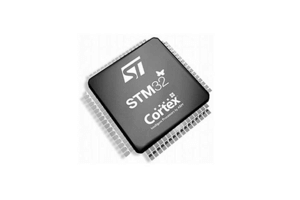
Microcontrollers are widely used in various control electronic equipment, automation systems, military equipment, medical equipment, home appliances, and other fields. They can handle various abnormal situations during the data sampling process, ensure data accuracy and reliability, implement energy...

As the use of cars increases, so does the technology that powers them, especially when it comes to the essential battery. The impact of battery weight on vehicle dynamics cannot be overstated. Lighter batteries, such as those made from lithium-ion, offer enhanced fuel efficiency ...
→ Next

Choosing the Right Microcontroller for Your Project: A Deep Dive into ESP32, RP2040, and STM32
on April 29th

How Much Do you Know about Car Battery Weight?
on April 28th
Popular Posts
-

What is GND in the circuit?
on January 1th 2945
-

RJ-45 Connector Guide: RJ-45 Connector Color Codes, Wiring Schemes, R-J45 Applications, RJ-45 Datasheets
on January 1th 2501
-

Fiber Connector Types: SC Vs LC And LC Vs MTP
on January 1th 2090
-

Understanding Power Supply Voltages in Electronics VCC, VDD, VEE, VSS, and GND
on November 9th 1897
-

Comparison Between DB9 and RS232
on January 1th 1765
-

What Is An LR44 Battery?
Electricity, that ubiquitous force, quietly permeates every aspect of our daily lives, from trivial gadgets to life-threatening medical equipment, it plays a silent role. However, truly grasping this energy, especially how to store and efficiently output it, is no easy task. It is against this background that this article will focus on a type of coin cell battery that may seem insignificant on the...on January 1th 1714
-

Understanding the Fundamentals:Inductance Resistance, andCapacitance
In the intricate dance of electrical engineering, a trio of fundamental elements takes center stage: inductance, resistance, and capacitance. Each bears unique traits that dictate the dynamic rhythms of electronic circuits. Here, we embark on a journey to decipher the complexities of these components, to uncover their distinct roles and practical uses within the vast electrical orchestra. Inductan...on January 1th 1662
-

CR2430 Battery Comprehensive Guide: Specifications, Applications and Comparison to CR2032 Batteries
What is CR2430 battery ?Benefits of CR2430 BatteriesNormCR2430 Battery ApplicationsCR2430 EquivalentCR2430 VS CR2032Battery CR2430 SizeWhat to look for when buying the CR2430 and equivalentsData Sheet PDFFrequently Asked Questions Batteries are the heart of small electronic devices. Among the many types available, coin cells play a crucial role, commonly found in calculators, remote controls, and ...on January 1th 1566
-

What Is RF and Why Do We Use It?
Radio Frequency (RF) technology is a key part of modern wireless communication, enabling data transmission over long distances without physical connections. This article delves into the basics of RF, explaining how electromagnetic radiation (EMR) makes RF communication possible. We will explore the principles of EMR, the creation and control of RF signals, and their wide-ranging uses. The article ...on January 1th 1550
-

CR2450 vs CR2032: Can The Battery Be Used Instead?
Lithium manganese batteries do have some similarities with other lithium batteries. High energy density and long service life are the characteristics they have in common. This kind of battery has won the trust and favor of many consumers because of its unique safety. Expensive tech gadgets? Small appliances in our homes? Look around and you'll see them everywhere. Among these many lithium-manganes...on January 1th 1519


